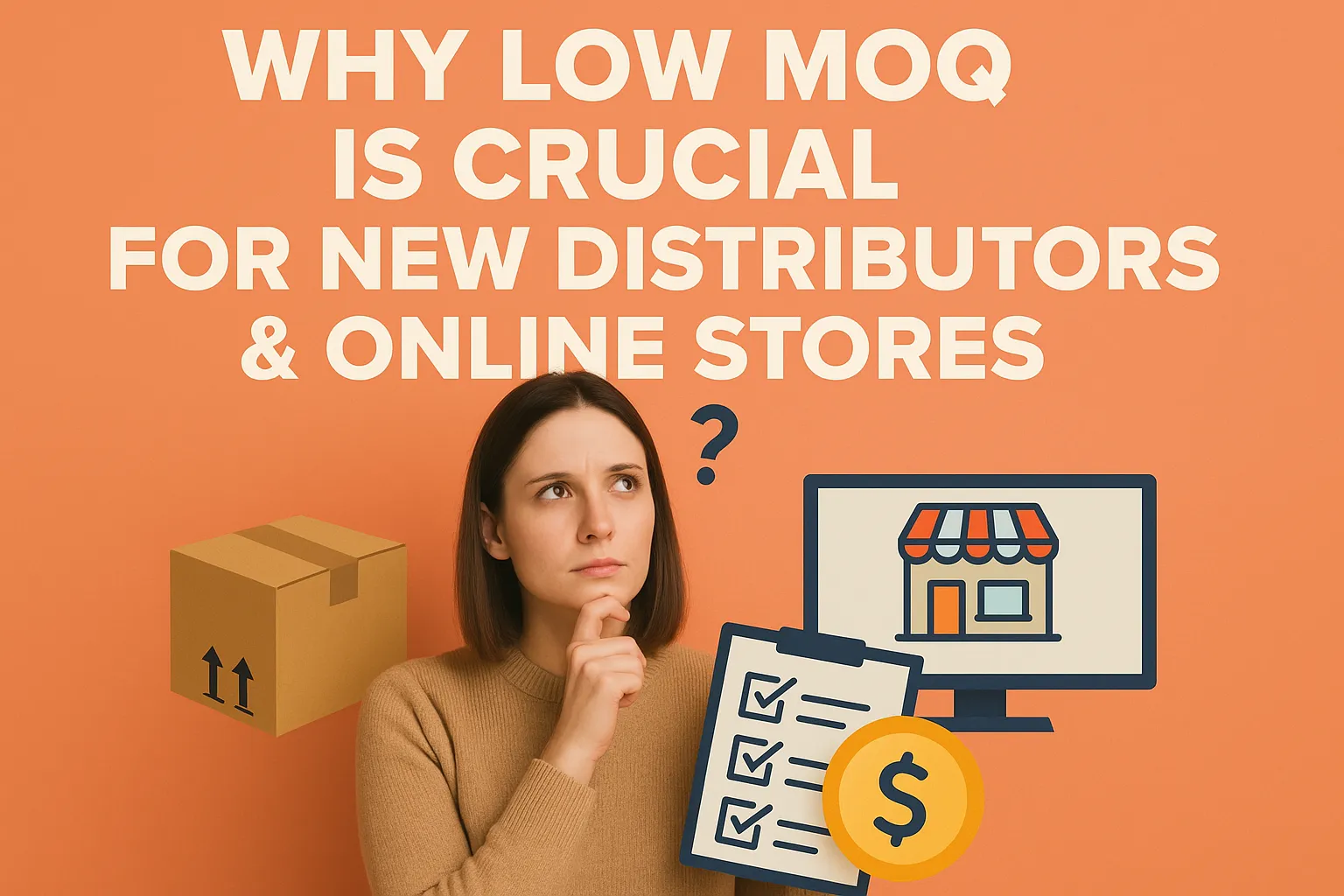For new B2B buyers, the biggest risks are overstock, slow cash turns, and unproven listings. A low MOQ (50–100 pcs) is not just “nice to have” — it’s a strategic lever for faster learning and healthier cash flow.
1) Protect cash and reduce inventory risk
Compare the initial outlay at a landed cost of $18 per unit:
- 100 pcs: 100 × $18 = $1,800
- 500 pcs: 500 × $18 = $9,000
You keep $7,200 free for ads, photography, and a second test SKU — crucial for small teams.
2) Test more SKUs, find winners sooner
With 300–500 pcs tied in one item, you learn slowly. With low MOQ, you can launch 3–5 SKUs at once, gather data on CTR, conversion, and review sentiment, and then double down on the top performers.
3) Faster feedback loops (listings & product)
- First 20–30 reviews often determine ranking.
- With 50–100 pcs, you can iterate images, bullets, packaging copy, and even add a missing accessory on the next batch without writing off huge inventory.
4) Lower storage and aging risk
Small lots minimize long-term storage fees and reduce the chance of packaging or regulatory changes making inventory obsolete.
5) Safer compliance ramp
Ship a small batch first to validate EN71/CPSIA/CE documentation, labels, and warnings. Fix anything immediately before scaling.
6) Smoother cash cycle
If you sell 2 units/day, that’s ~60 units/month. A 100-unit batch clears in ~7 weeks, returning cash quickly for replenishment; a 500-unit batch may sit for months, straining cash and rankings.
7) Real-world A/B testing
Use MOQ to test:
- Colors/fabrics on carriers or playpens
- Feature sets (with/without storage pouch, thicker mat)
- Bundles (highchair + mat, playpen + balls)
Pick the winner by conversion & review language, then standardize.
Reorder point (ROP) you can copy
Avoid stock-outs (which kill ranking) with a simple formula:
ROP = Daily sales × Lead time (days) + Safety stock
Example: 3 units/day, 20-day lead time, safety stock 30 →
ROP = 3 × 20 + 30 = 90. When inventory hits 90, place your next PO.
A minimal-risk launch plan (50–100 pcs)
- Pick 3 SKUs (e.g., Playpen / Highchair / Carrier).
- Order 50–100 pcs each; request neutral packaging that accepts labels.
- Prep assets: white background + lifestyle + 30–60s demo video.
- Launch PPC with tight keywords; collect FAQs; add a comparison chart.
- Review checkpoint at 30–40% sold:
- If CTR < 0.6% or CVR < 8–10%, fix images and bullets.
- If returns mention the same issue twice, adjust accessories or instructions.
- Reorder at ROP; increase quantity only after two stable cycles.
Negotiating with suppliers on low MOQ
- Mix models to meet a master MOQ across SKUs.
- Batch colorways (same fabric across items) to lower material waste.
- Standard packaging first, custom print on the second order.
- Share rolling forecasts to earn better pricing as volumes rise.
Where low MOQ matters most
- New stores and first-time importers
- Entering a new marketplace/region
- Seasonal trials (e.g., Q4 bundles)
- Upgrades to packaging or feature sets
What to avoid even with low MOQ
- Over-fragmenting variants (too many colors/sizes dilute reviews).
- Ignoring compliance labeling and age warnings.
- Ordering before your listing assets are finished (photos/video/size info).
Quick checklist
- MOQ 50–100 confirmed per SKU
- Compliance path aligned (EN71/CPSIA/CE)
- Photo/lifestyle/video assets ready
- ROP set with lead time + safety stock
- Packaging & inserts finalized (QR to instruction video)
- Spare parts/after-sales plan in place
Bottom line: Low MOQ lets you validate faster, learn cheaper, and scale only what works. That’s the difference between a cash-hungry gamble and a disciplined growth engine.

